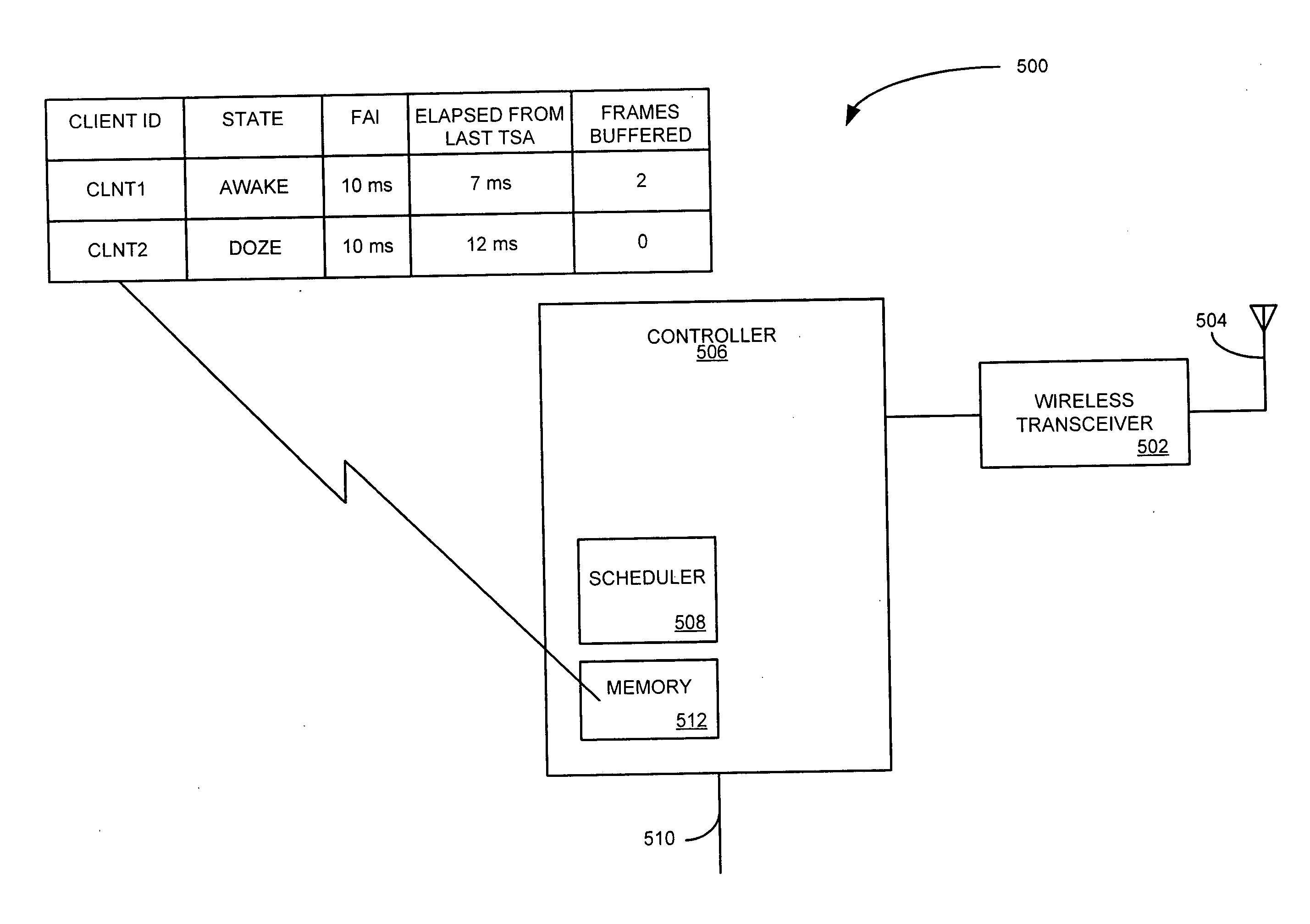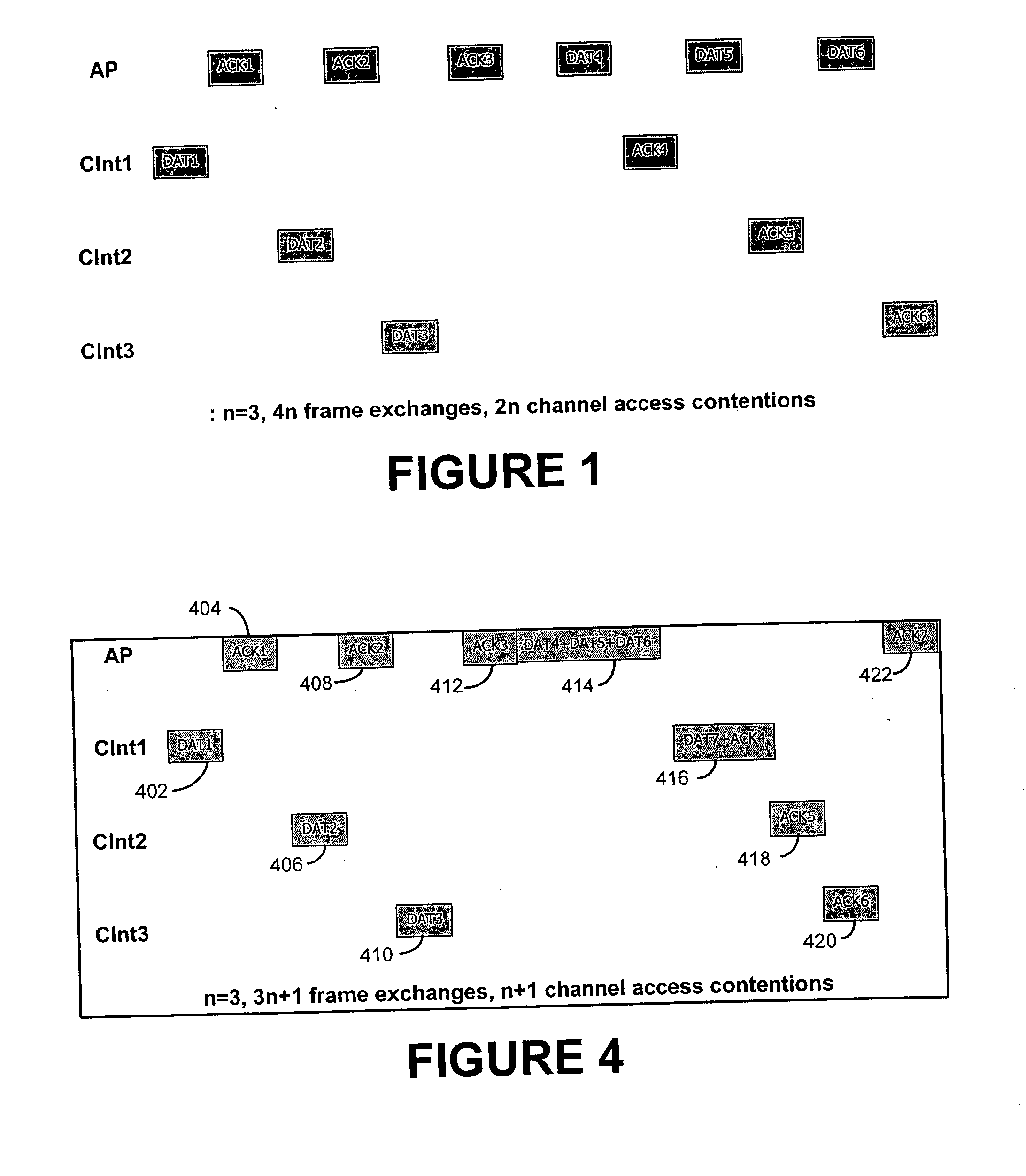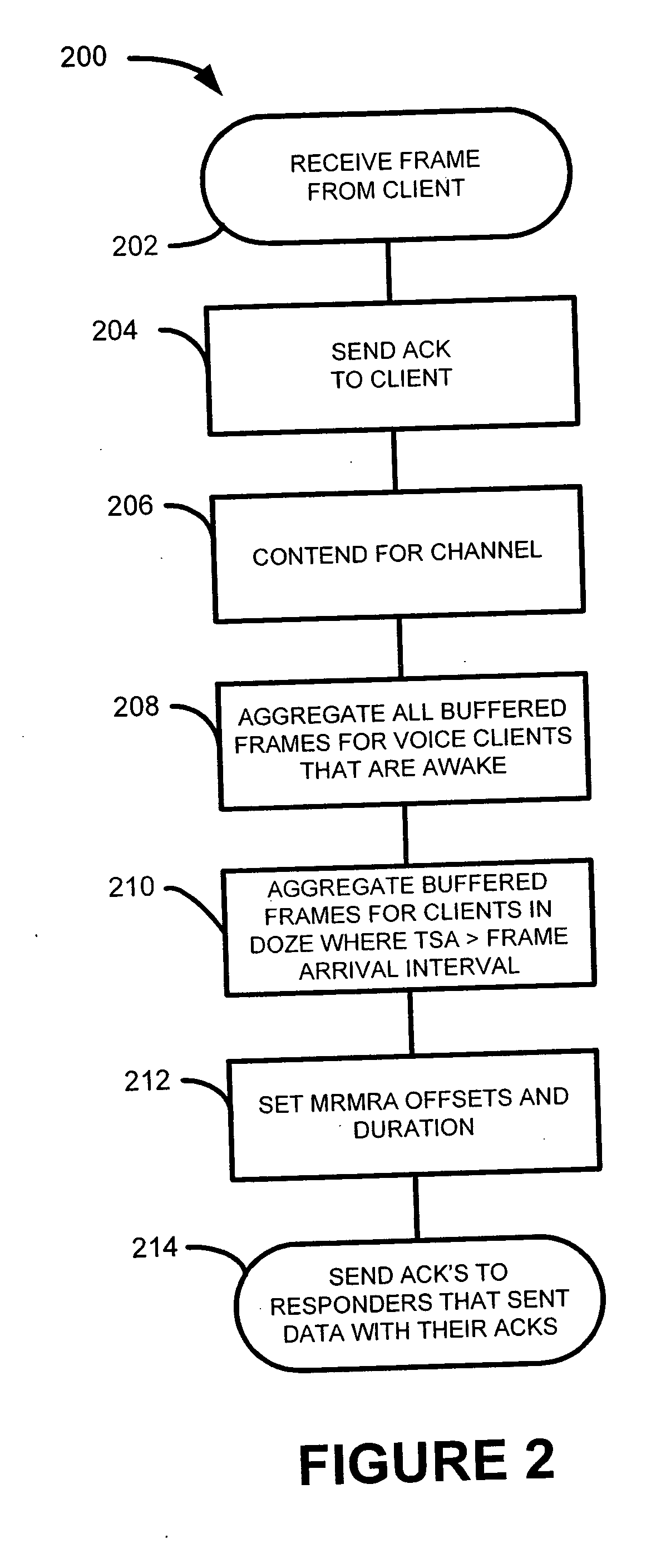Aggregation scheduler
a scheduler and aggregation technology, applied in frequency-division multiplex, instruments, wireless commuication services, etc., can solve the problems of scheduling time shifts, delays in upsd frame exchanges, and polls can be delayed, so as to accurately ascertain the response duration
- Summary
- Abstract
- Description
- Claims
- Application Information
AI Technical Summary
Benefits of technology
Problems solved by technology
Method used
Image
Examples
Embodiment Construction
[0020] Throughout this description, the preferred embodiment and examples shown should be considered as exemplars, rather than limitations, of the present invention. In accordance with an aspect of the present invention there is described herein an aggregation scheduler that resides on the access point (AP). The scheduler determines what frames are to be aggregated in an aggregate at a specific time and to determine the time and duration to be allocated for each responder of an aggregate. The AP maintains information for each client, such as a voice client, including but not limited to whether the client is in an awake state or in a doze (power save) state, and the TSA of the last frame received from the client. The TSA can be the time when the AP received the frame, or derived from the frame itself, e.g., the time field of the RTP header of a voice frame.
[0021] When an AP obtains channel access, for example using EDCA or HCCA, it aggregates voice frames for those clients in an awa...
PUM
 Login to View More
Login to View More Abstract
Description
Claims
Application Information
 Login to View More
Login to View More - R&D
- Intellectual Property
- Life Sciences
- Materials
- Tech Scout
- Unparalleled Data Quality
- Higher Quality Content
- 60% Fewer Hallucinations
Browse by: Latest US Patents, China's latest patents, Technical Efficacy Thesaurus, Application Domain, Technology Topic, Popular Technical Reports.
© 2025 PatSnap. All rights reserved.Legal|Privacy policy|Modern Slavery Act Transparency Statement|Sitemap|About US| Contact US: help@patsnap.com



